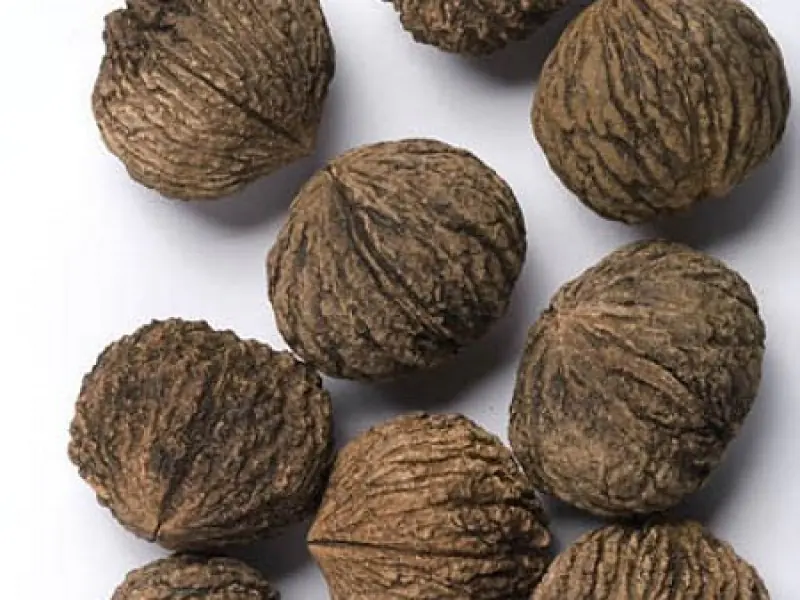The beneficial properties have been known for a long time. The Mayan Indians considered this tree the “elixir of life” and used it to treat all diseases. They do not forget about the healing plant today. Extracts from fruits and leaves are included in medicines to fight parasites, maintain liver health, thyroid gland, and improve immunity. All parts of the plant have a pharmacological effect tinctures are prepared from them, oil is made, and juice is squeezed out.

Description of culture
Black walnut should not be confused with walnut.Although they belong to the same family, they have significant differences. First of all, this is the growing area, as well as the appearance of the fruit.
Black walnut is native to North America. It is also cultivated in Russia, but in limited areas. In terms of temperature and humidity conditions, the Stavropol or Krasnodar regions are more suitable for wood. In Ukraine, black walnut grows only on the territory of the Krasnokutsk Arboretum.
The American fruit appeared in Europe at the beginning of the 17th century. There is an assumption that he got there with the ships of the Spanish conquistadors: along with the looted gold, they brought strange plants.
The tree requires a large area. Some members of this family live up to 500 years and grow more than 60 m in height. The straight trunk becomes covered with hard bark after 6-8 years, which is also a distinctive feature of the American walnut. Its wood is often used to make furniture.
Oval leaves reach 50 cm in length. Unripe green fruits are covered with hairs. The thick peel emits a pungent aroma and darkens when ripe. The kernels inside are very tasty and have a specific smell.
For a long time, the medicinal properties of juglans nigra remained unexplored. And only at the turn of the 20th century did people pay attention to the tree. In Russia, specialists from the NPF “FITECO” began studying the composition and beneficial properties of black walnut.
Chemical composition
The fruits, peel, and leaves of the plant contain many vitamins and microelements. They are all sources of nutrients.
The beneficial properties and contraindications of black walnut largely depend on the composition of the kernels, since they are most often the basis of dietary supplements.
Ripe fruits contain eight fatty acids, up to 30% proteins and 7% carbohydrates. The juglone found in nuts is of great importance for health. The substance has an antifungal, antiparasitic, antimicrobial effect, improves intestinal function, and restores the mucous membrane.
Other beneficial components contained in the fruits are:
- tannins
- bioflavonoids
- phytosterols
- anthocyanidins
- organic acids.



